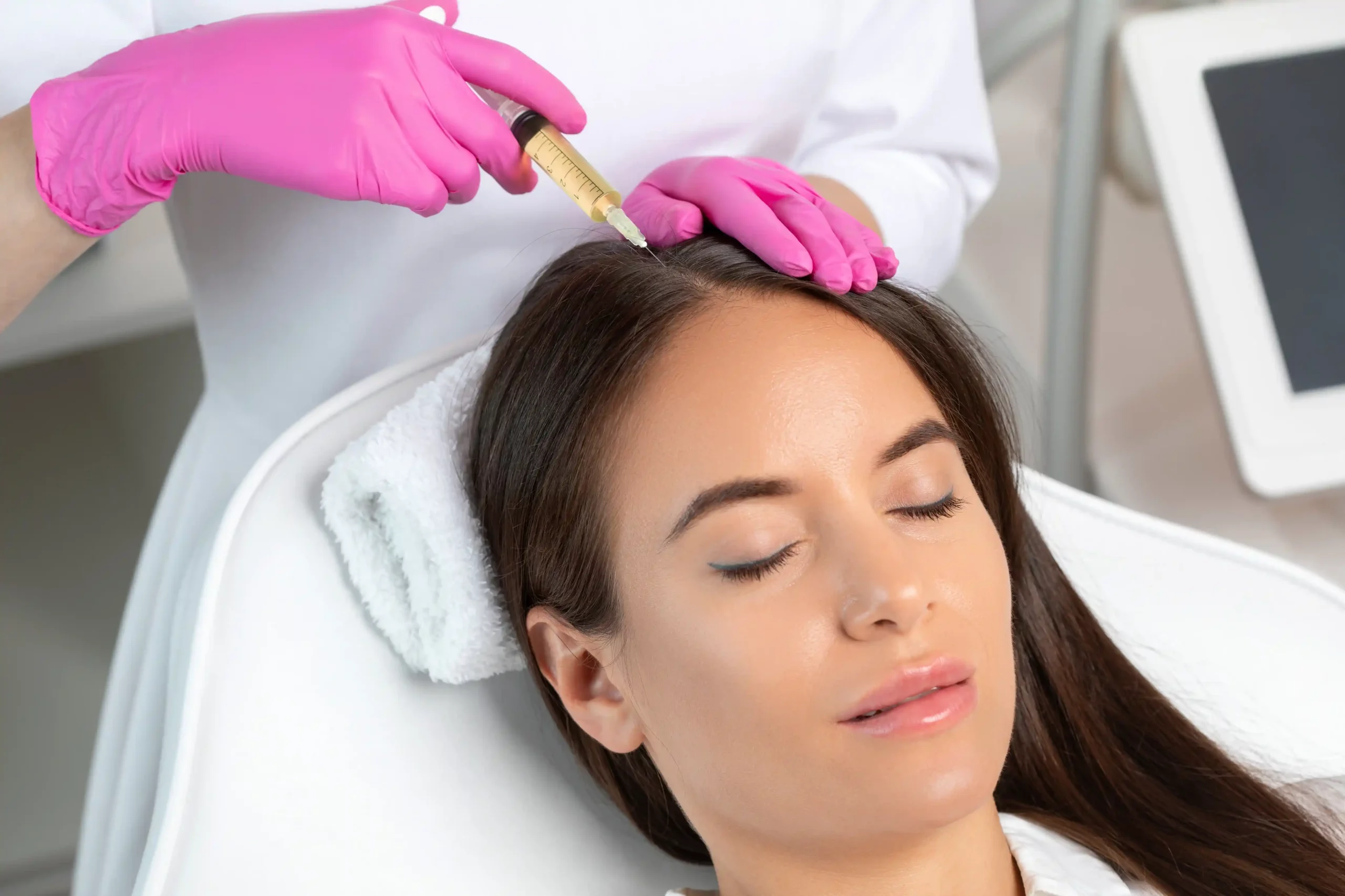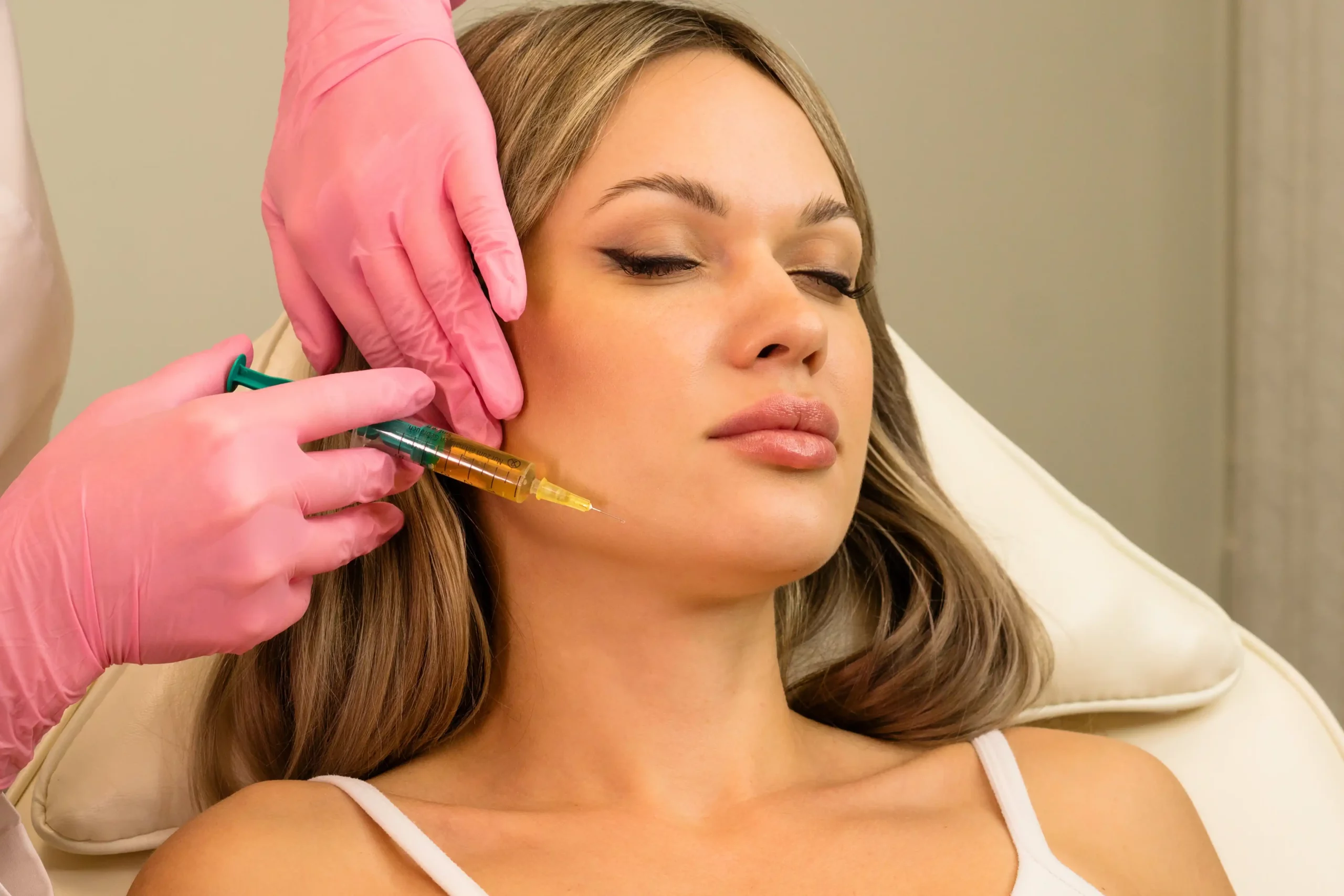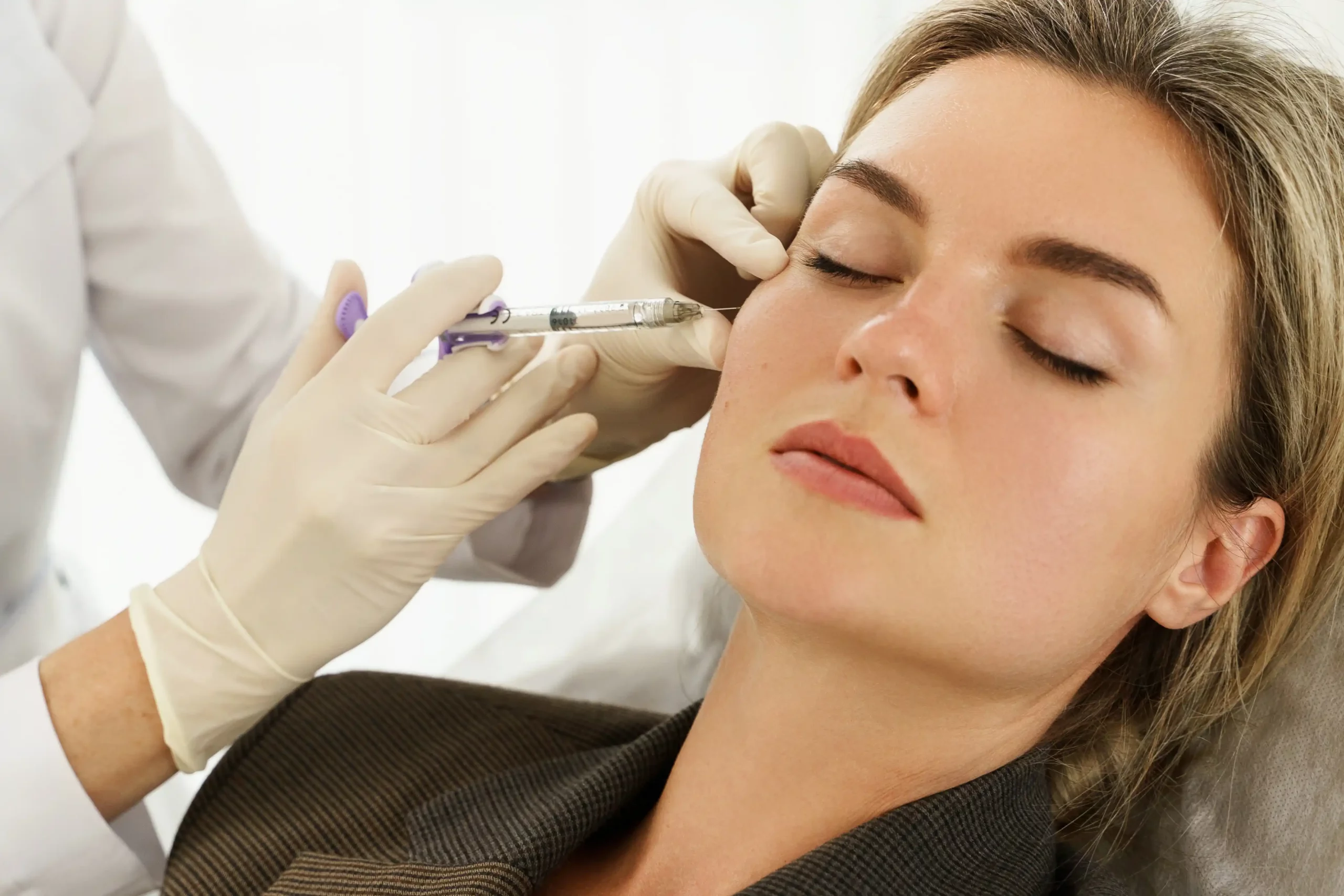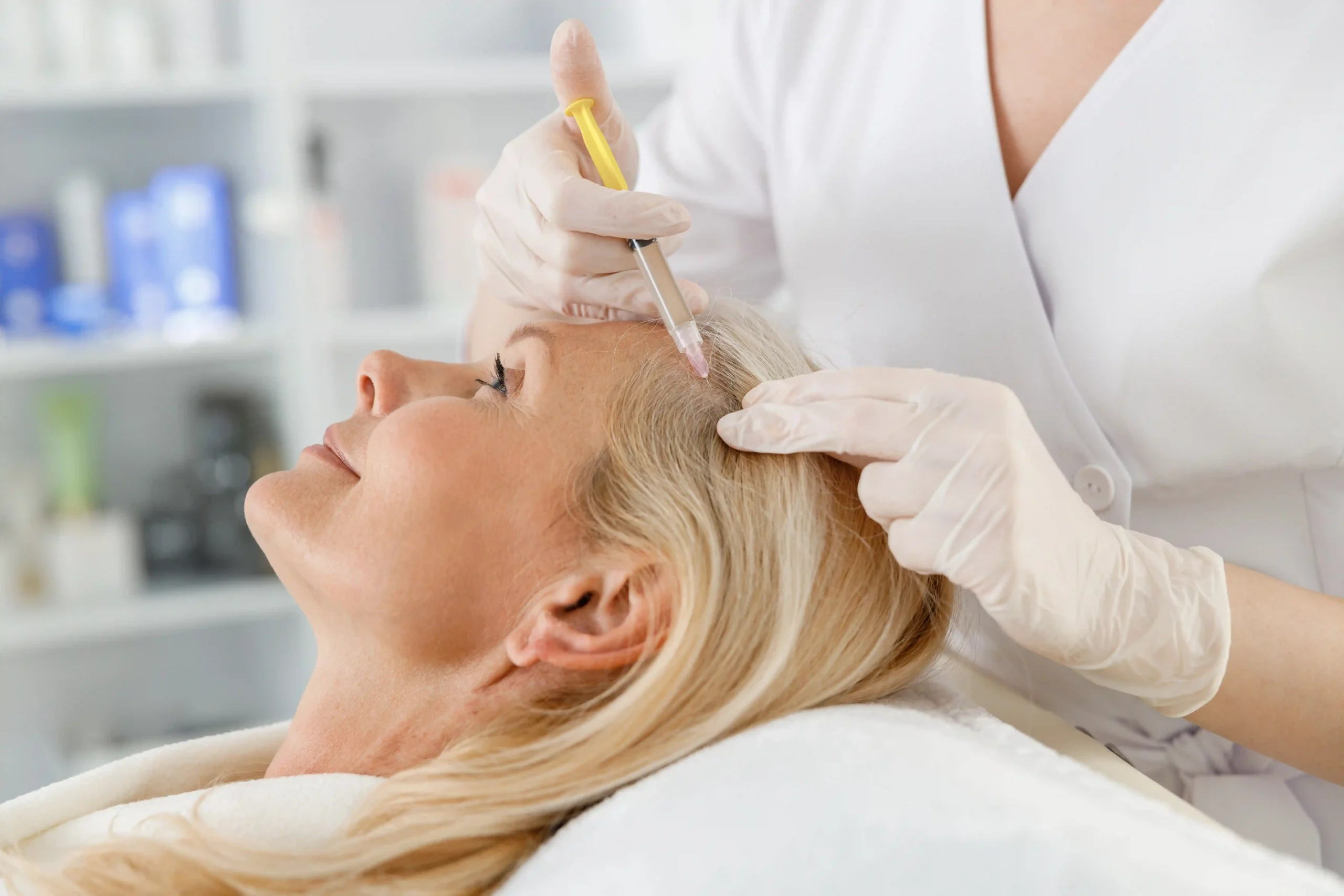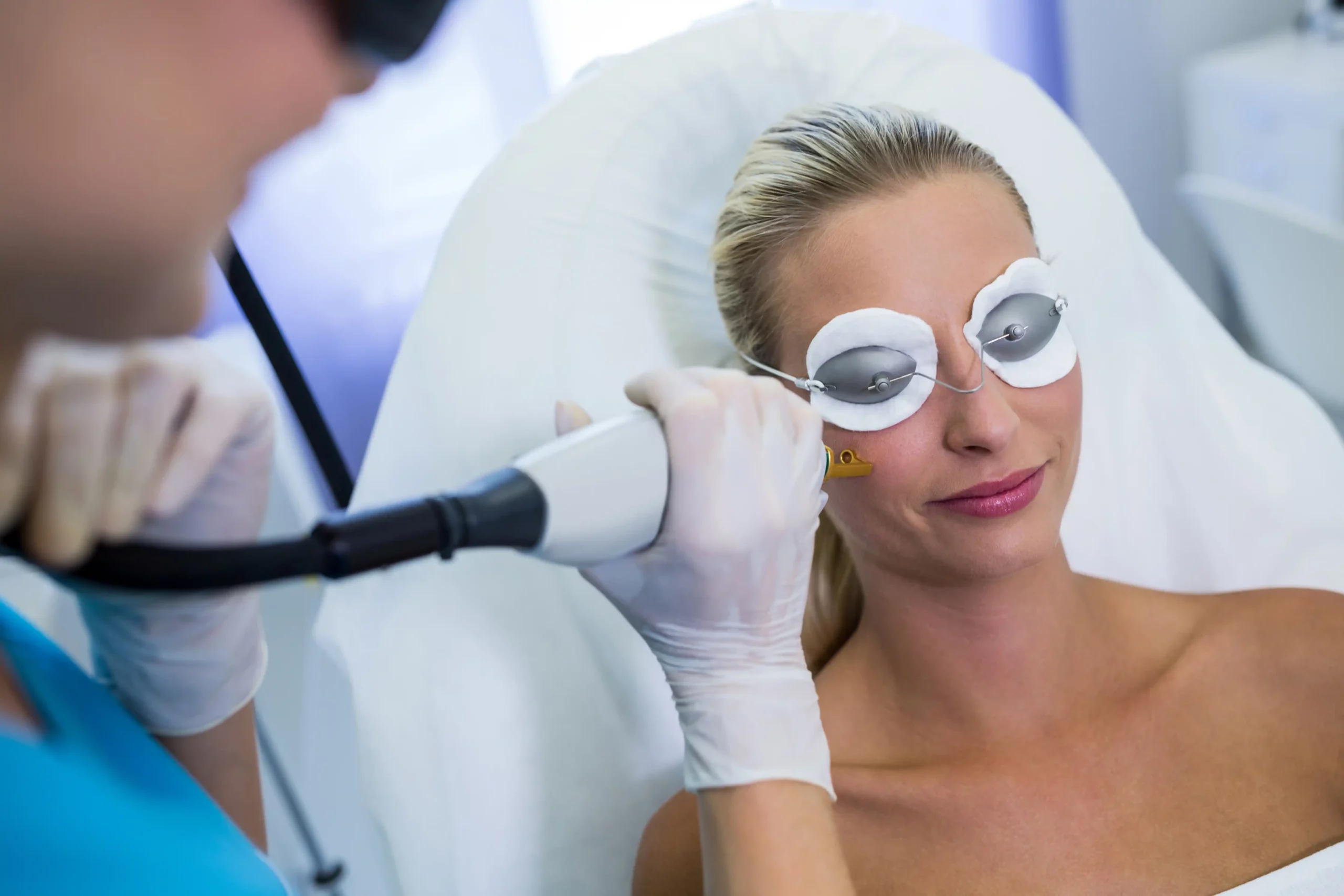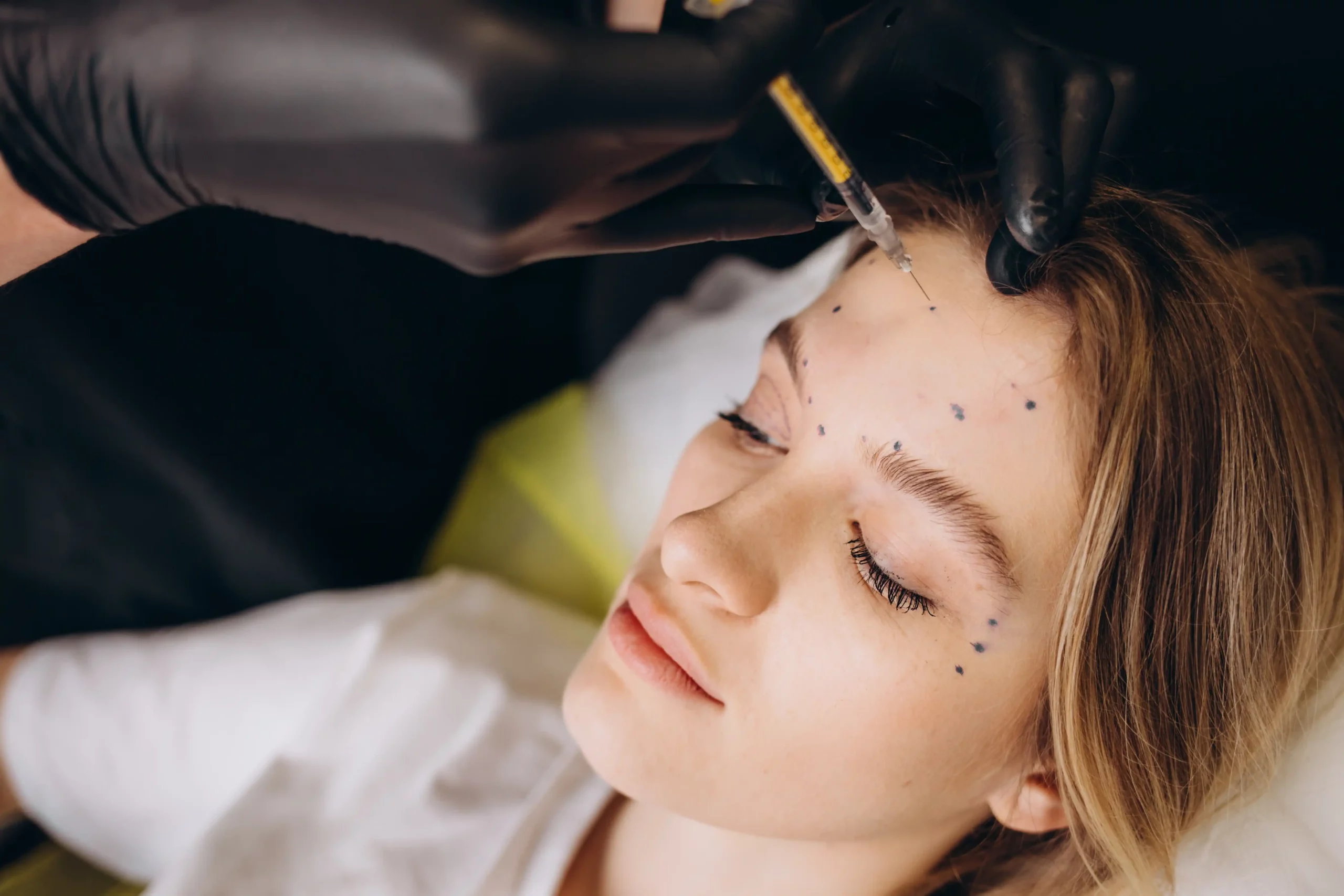Table of Contents
If you’ve been noticing more fine lines, thinning hair, or skin that doesn’t bounce back the way it used to, you’ve probably heard about treatments like Platelet Rich Plasma (PRP) and Platelet Rich Fibrin (PRF). Both are popular options because they use your body’s own natural healing process instead of chemicals or synthetic fillers.
But here’s the question most people have: Is PRF really better than PRP, and why are so many providers recommending it?
The truth is that while PRP has been around longer, PRF takes things a step further. Patients are drawn to PRF because it can give smoother skin, fuller hair, and healthier tissue with results that last longer. It also requires less downtime and doesn’t rely on additives. If you’re tired of quick fixes that fade too fast or you’re looking for something more natural, understanding the difference between PRP and PRF can help you make the right choice.

What is Platelet Rich Plasma (PRP)?
PRP therapy begins with a simple blood draw. The sample is placed in a centrifuge that spins at a high speed to separate the plasma from red and white blood cells. What remains is a concentrated solution of platelets suspended in plasma, which contains valuable growth factors.
These growth factors are responsible for stimulating collagen production, accelerating healing, and supporting tissue regeneration. In aesthetic treatments, PRP injections are commonly used to rejuvenate the skin, reduce fine lines, soften scars, and encourage hair regrowth in thinning areas.
PRP works by giving your body an immediate burst of healing components. While this is effective, the benefits are relatively short-lived because the growth factors are released quickly and then dissipate. This is one of the biggest reasons why PRP is now being compared to and sometimes replaced by PRF.
What is Platelet Rich Fibrin (PRF)?
PRF therapy is created through a process very similar to PRP, but with some important differences. After your blood is drawn, it is spun in a centrifuge at a slower speed. This gentler process preserves more of the natural components in the blood, including platelets, white blood cells, stem cells, and fibrin.
The fibrin forms a three-dimensional matrix, almost like a natural scaffold, that traps platelets and stem cells. Instead of releasing growth factors all at once like PRP does, PRF releases them slowly over several days. This allows the healing process to continue working for much longer, which often leads to more noticeable and longer-lasting results.
Because no anticoagulants or additives are used, PRF injections are considered 100 percent natural. Such an action makes them an appealing choice for patients who want to avoid synthetic materials and rely solely on their body’s own healing power.
Key Differences Between PRP and PRF
Processing and Centrifugation
PRP is spun at a higher speed, which separates the blood layers more aggressively and requires anticoagulants to prevent clotting. PRF, on the other hand, is spun more slowly, allowing more beneficial cells to remain and creating a natural fibrin clot.
Concentration of Healing Cells
PRF contains higher concentrations of stem cells and white blood cells, while PRP is primarily platelet-focused. This gives PRF a more well-rounded regenerative profile.
Release of Growth Factors
PRP delivers an immediate release of growth factors, which may fade quickly. PRF provides a slow, sustained release over the course of a week or more, prolonging its healing potential.
Natural Composition
PRP typically requires additives to prevent clotting, while PRF is free from chemicals or anticoagulants, making it the more natural choice.
Benefits of PRF Over PRP
Patients and providers are finding that PRF treatments offer several unique benefits when compared to PRP.
- Longer-lasting results: The fibrin matrix allows for a gradual release of growth factors, so improvements can last for several months to a year.
- Enhanced skin rejuvenation: PRF is effective in improving skin texture, tone, and elasticity, especially in delicate areas like under the eyes.
- More natural process: With no additives or anticoagulants, PRF relies only on your body’s natural components.
- Stronger stimulation of collagen: The higher concentration of regenerative cells promotes better tissue regeneration.
- Versatility: PRF can be used for aesthetic purposes like anti-aging and hair restoration, as well as for dental and orthopedic applications.
Popular Uses of PRP and PRF
Skin Rejuvenation
Both PRP and PRF are widely used to improve skin quality by reducing fine lines, discoloration, and scarring. PRF tends to provide more dramatic improvements due to its sustained release of growth factors.
Hair Restoration
PRF hair restoration has become a popular option for men and women experiencing thinning hair. By nourishing hair follicles with growth factors and stem cells, PRF can encourage stronger, healthier regrowth.
Anti-aging and Volume Loss
PRF is increasingly being used as a natural alternative to synthetic fillers, especially for under-eye hollows and crepey skin. Because it uses your own cells, the results look natural and integrate seamlessly into the skin.
What to Expect During a PRF Treatment
When you arrive for a PRF appointment, your provider will begin by drawing a small sample of your blood. The sample is processed in a centrifuge to separate the components. Because no additives are used, the result is a natural concentrate of platelets, fibrin, stem cells, and white blood cells.
This solution is then injected into targeted areas such as the face, scalp, or under the eyes. The procedure is typically quick, with most sessions lasting under an hour. Some redness, swelling, or bruising may occur, but these effects usually resolve within a few days.
Over the following weeks, the body begins to respond to the growth factors by building new collagen, regenerating tissue, and promoting healing. Improvements continue to develop gradually, and results are often visible for months at a time.
Who is a Good Candidate for PRF?
RF is ideal for individuals seeking a natural treatment that uses their own biology to restore and rejuvenate. It is particularly effective for patients with:
- Fine lines and wrinkles
- Under-eye hollows or dark circles
- Thinning hair
- Skin texture concerns
- Loss of elasticity
Because PRF is made from your own blood, there is little to no risk of allergic reactions or adverse responses. Patients who are in good general health and follow pre- and post-care guidelines are usually excellent candidates.
Skin Ritual Aesthetic Dermatology PRF – Platelet Rich Fibrin Injections/ EZ GEL in Gilbert, AZ
At Skin Ritual Aesthetic Dermatology in Gilbert, AZ, patients can experience the transformative effects of PRF – Platelet Rich Fibrin Injections and EZ Gel treatments. These treatments are designed to reduce signs of aging, improve skin texture, address under-eye hollows, minimize fine lines and wrinkles, reduce crepiness, even out discoloration, and stimulate hair growth.
Most patients begin to notice results within a few weeks to a few months after treatment, depending on their specific goals and individual healing factors. The results are long-lasting, typically several months to a year, making this one of the most effective natural rejuvenation options available.
One of the advantages of PRF injections in Gilbert, AZ, is that they require minimal downtime. Most patients experience only mild swelling or bruising at the injection sites, which quickly fades. To prepare for treatment, it is recommended to avoid alcohol and blood-thinning medications. Afterward, following your provider’s aftercare instructions will help ensure the best possible results.
Schedule a consultation today and discover how PRF can help you achieve your goals.
Frequently Asked Questions
What is the difference between PRP and PRF?
PRF contains more stem cells and releases growth factors more slowly than PRP, making it longer lasting.
How long do PRF results typically last?
Most patients enjoy results that last several months to a year, depending on the area treated.
Is PRF treatment safe?
Yes, PRF is made from your own blood with no additives, reducing the risk of allergic reactions or complications.
What can PRF be used for?
PRF can improve skin texture, reduce wrinkles, treat under-eye hollows, and promote hair growth.
Is there downtime after PRF injections?
Most patients experience only mild swelling or bruising that resolves within a few days.

